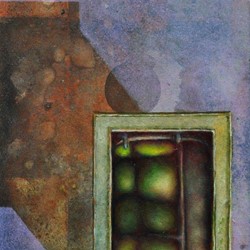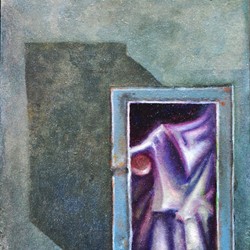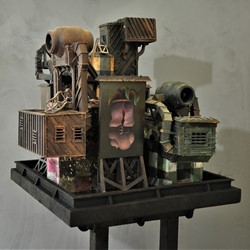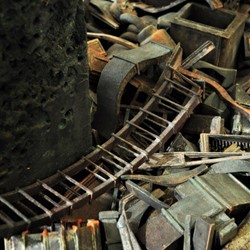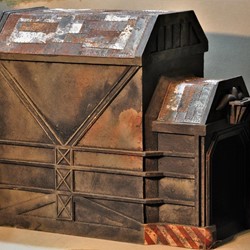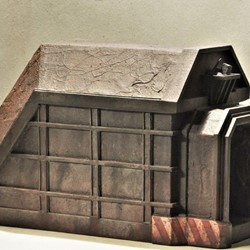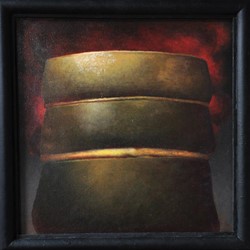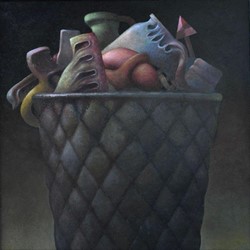Exhibition
Stuart Elliott // Floe

'Floe is intended to read as a visual conversation about choices and their consequences, from the immediate to those so distant as to be effectively unknowable. Like any monument, folly or ruin, accepted meaning/s most often are so malleable as to be at best retrospective whether that ‘monument’ is one of intention or accident.
Although Floe's structures were built deliberately and to predefined specification, their ultimate appearances were largely formed by arbitrary factors. Best defined as a series of slow collisions involving rigid order and the arbitrary, erosive elements mediated by circumstance, FLOE is a body of work pertaining to the interconnectedness of things, the consequences of transaction and the multiple directions possible therefrom.
The structures in the main installation began life as two sets of blank registers for open ended future activity. The work consists of two intersecting, apparently opposing streams. The first stream is a series of horizontal receptacles intended to accept additive by-product material from indirectly related activities. The second stream consists of vertical elements, designed to accept reductive processes also in an open-ended program and also from indirectly related activity.
Although there is an overarching sense of barely contained chaos, the components’ location and their spacing is also intended to appear controlled, so as to present a kind of order, logic even. There’s an intention of a sense of organisation, as in wreckers’ or marshalling yards wherein things are organised prior to further activity.
Rather than an anarchic ruin, this is a place where further action may well be imminent. However, what that action might be is intended to be ambiguous. The vertical units have evidence of earlier purpose/s. They are, however, currently dormant. The troughs are mostly full to saturation. Poised for terminal relocation or processed for other purposes - abandoned or prepared? The towers appear dormant but might they be on the cusp of decay, demolition or reactivation?'
Stuart Elliott 2022



